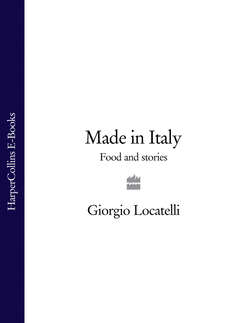Читать книгу Made in Italy: Food and Stories - Giorgio Locatelli - Страница 31
Capperi Capers
Оглавление‘Unique and pungent’
Capers are beautiful things, with a unique pungent flavour, which we use a lot in Italy, especially with antipasti, but also with meat and fish. When Prince Charles talked about boiled mutton with caper sauce at a celebration of English mutton and they said this was an old English sauce, I was amazed. Of course you see capers in jars all over the world these days, but I had always thought of fresh capers as Italian. Then I did some research, and found out that in the 1700s there were guys who brought Marsala wine and capers over to England from Italy.
The best capers come from the islands of Salina and Pantelleria off Sicilia, with their volcanic soil and hot climate. The capers, which are not pods, as many people think, but tiny tight flower buds of the shrub Capparis spinosa, grow everywhere. The shrubs are planted in special trenches which are dug to hold them firm and protect them from the sirocco wind. And of course, the people of each island will say that their capers are the best.
Like saffron, capers are harvested by hand, in the late spring/early summer, before they begin to open. It is only if you pick them at just the right time that you get the proper, stratified texture. If the bud hasn’t developed enough, they are too compact. Like olives, they must be cured, as they are too bitter to eat as they are. The best are laid down on canvas outside, to get the sun for a couple of days, then layered with salt in wooden barrels, though they can also be put into brine or wine vinegar.
We use them in tartar sauces, hot caper sauces, sweet and sour sauces and salsa verde, and serve them with any kind of dish where you want their saltiness and special flavour to cut through a fatty ingredient. Sometimes, also, we soak them for 24 hours, then crush them, and fry them as a garnish for fish dishes. It is always best to add capers to dishes at the end if you are using them in cooking, or they will be too strong.
If the buds are allowed to stay on the bushes, they open into beautiful white flowers that seem to turn the whole island into a sea of white, before developing into fruit, which we call the caper berry, or cucunci. They look a little like green olives on stalks, but when you cut them in half they are full of tiny seeds. They have a similar flavour to capers, but are less intense. Sometimes we combine capers and caper berries in the same dish, as in Monkfish with walnut and caper sauce (agrodolce, see page 426) in which the caper berries go into a rocket salad.
